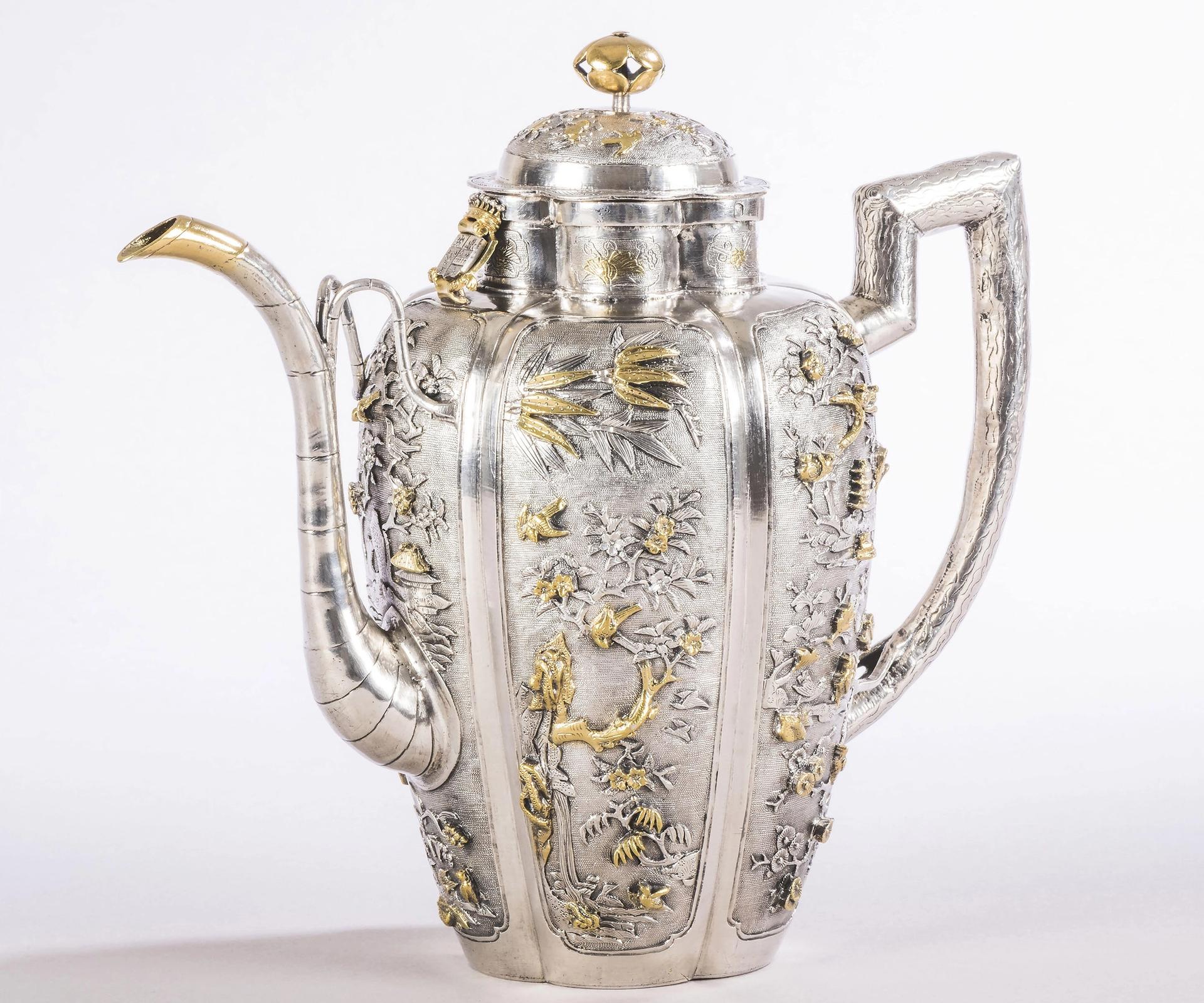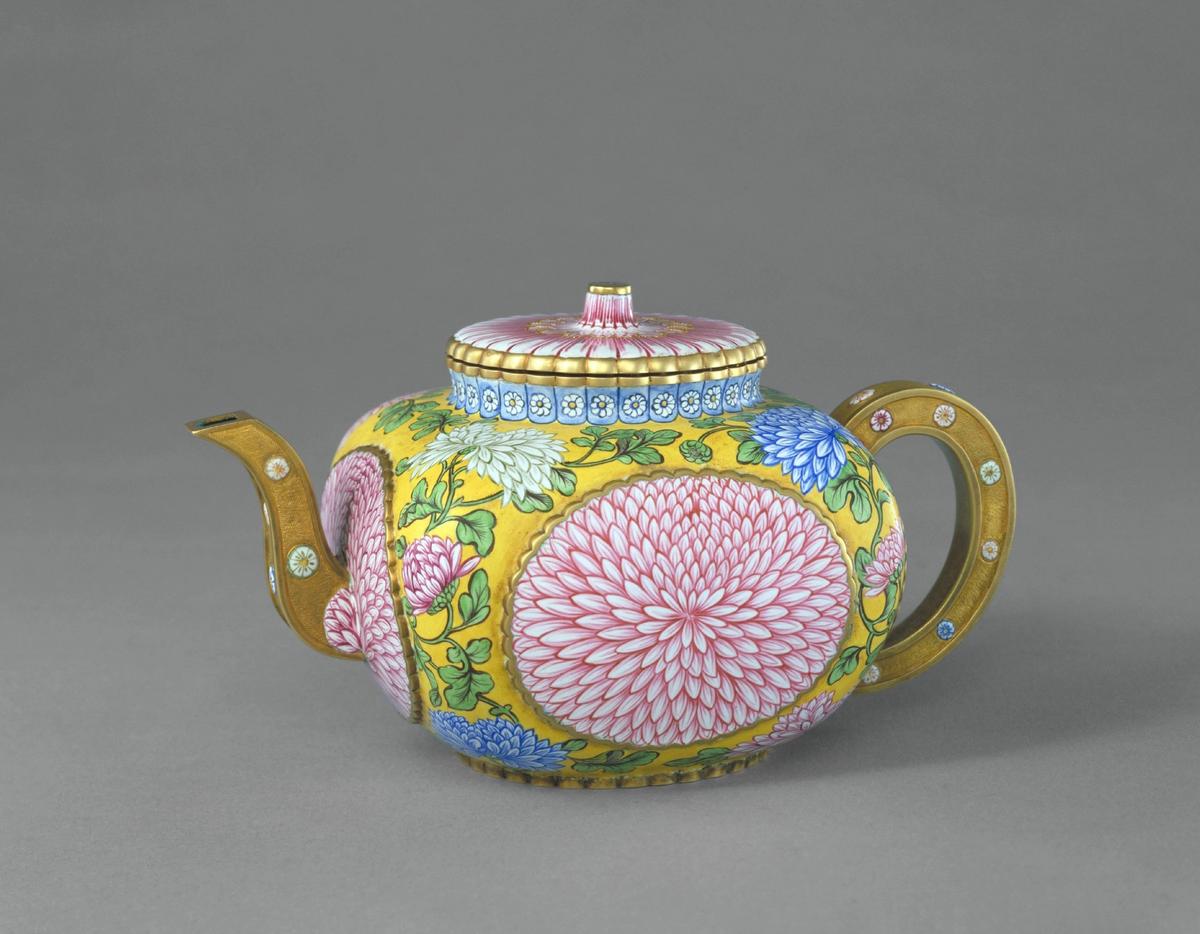Treasures from the Palace of Versailles, just outside Paris, and The Palace Museum in The Forbidden City in Beijing—both Unesco World Heritage Sites—are on show at the Hong Kong Palace Museum (until 4 May). The exhibition, The Forbidden City and The Palace of Versailles: China-France Cultural Encounters in the Seventeenth and Eighteenth Centuries, throws new light on the burgeoning Sino-French exchanges that flourished under different French monarchs and Chinese emperors, and highlights “a period of significant cultural and artistic exchange between the two nations”, the exhibition organisers say.
The show marks the 60th anniversary of the establishment of diplomatic relations between France and China, prompting a joint cultural bonanza that resulted in a similar exhibition held at the Palace Museum, Beijing, last year. However, according to a spokesperson for Hong Kong’s Palace Museum, this show’s design and objects are different.

Pascaline calculator, made of gilded copper and dating from the Qing dynasty (Kangxi period, 1661-1722), loaned from the Palace Museum in Beijing © The Palace Museum
The exhibition in Hong Kong explores how Louis XIV of France (r. 1643-1715) reached out to his contemporary Emperor Kangxi in China in 1688, sparking a range of cultural and economic partnerships. “Despite the vast geographical distance between the two imperial palaces, and the fact that the rulers of the two nations never met, the royal courts held immense curiosity for one another,” says an exhibition statement.
Louis XIV’s decision to dispatch six Jesuit missionaries as the ‘King’s Mathematicians’ to China was also far-reaching. The Jesuits successfully carried out their assignments and reported back to the king everything they discovered in China, adds a statement from Versailles.

Silver jug from the Qing dynasty, Kangxi period, 1661–1722) © The Palace of Versailles/Christophe Fouin
This mutually conducive relationship continued under successive monarchs and their spouses. Marie Leszczyńska, the queen consort of Louis XV (r. 1715-1774), created a ‘Chinese Chamber’ in her private apartment in Versailles. “Political and intellectual links between France and China forged in the 17th century ushered in a true golden age for Franco-Chinese diplomatic relations, which lasted until the French Revolution,” the Versailles statement says.

The Palace of Versailles, just outside Paris (left) and the Palace Museum in The Forbidden City in Beijing © The Palace of Versailles/T. Garnier; © The Palace Museum
More than 150 works are being displayed across four sections, covering scientific and diplomatic exchanges along with craftsmanship and innovation. Key objects include a silver jug (around 1680) made in Guangdong, southeast China, that was presented as a gift to Louis XIV by a Siamese envoy in 1686. In 1793, the jug was saved from destruction by the post-Revolution government in France.
The Palace Museum has also loaned a Pascaline calculator, made of gilded copper and dating from the Qing dynasty (Kangxi period, 1661-1722) along with a lurid chrysanthemum pot (1783) made by the French enameller Joseph Coteau. The Hong Kong Museum is planning to host a scholarly workshop later this year where experts will present the latest research on Sino-French cultural exchange of the era.
Blockbuster shows drawn from overseas institutions are proving to be popular in Hong Kong. Botticelli to Van Gogh: Masterpieces from the National Gallery, London, for example, which ran at the Hong Kong Palace Museum from November 2023 to April last year, attracted around 240,000 visitors.
• The Forbidden City and The Palace of Versailles: China-France Cultural Encounters in the Seventeenth and Eighteenth Centuries, Hong Kong Palace Museum, 8 Museum Drive West Kowloon, Tsim Sha Tsui, until 4 May


